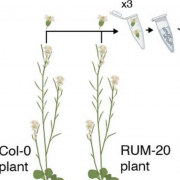bioRxiv with MoiLab: Improved pool-sequencing
Monitoring rapid evolution of plant populations at scale with Pool-Sequencing
Lucas Czech et al. (2022) bioRxiv 477408 doi.org/10.1101/2022.02.02.477408
The change in allele frequencies within a population over time represents a fundamental process of evolution. By monitoring allele frequencies, we can analyze the effects of natural selection and genetic drift on populations. To efficiently track time-resolved genetic change, large experimental or wild populations can be sequenced as pools of individuals sampled over time using high-throughput genome sequencing (called the Evolve & Resequence approach, E&R). Here, we present a set of experiments using hundreds of natural genotypes of the model plant Arabidopsis thaliana to showcase the power of this approach to study rapid evolution at large scale. First, we validate that sequencing DNA directly extracted from pools of flowers from multiple plants — organs that are relatively consistent in size and easy to sample — produces comparable results to other, more expensive state-of-the-art approaches such as sampling and sequencing of individual leaves. Sequencing pools of flowers from 25-50 individuals at ~40X coverage recovers genome-wide frequencies in diverse populations with accuracy r?>?0.95. Secondly, to enable analyses of evolutionary adaptation using E&R approaches of plants in highly replicated environments, we provide open source tools that streamline sequencing data curation and calculate various population genetic statistics two orders of magnitude faster than current software. To directly demonstrate the usefulness of our method, we conducted a two-year outdoor evolution experiment with A. thaliana to show signals of rapid evolution in multiple genomic regions. We demonstrate how these laboratory and computational Pool-seq-based methods can be scaled to study hundreds of populations across many climates.




